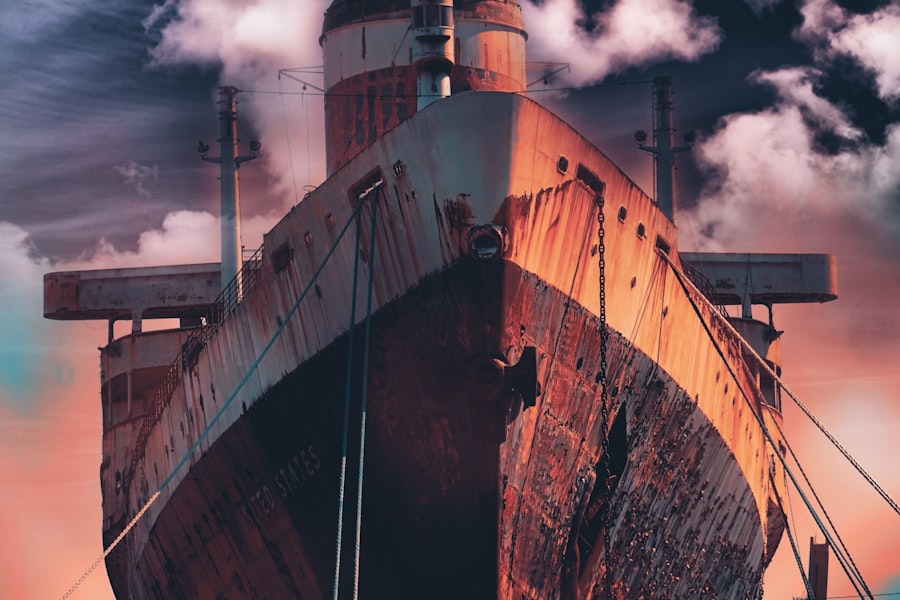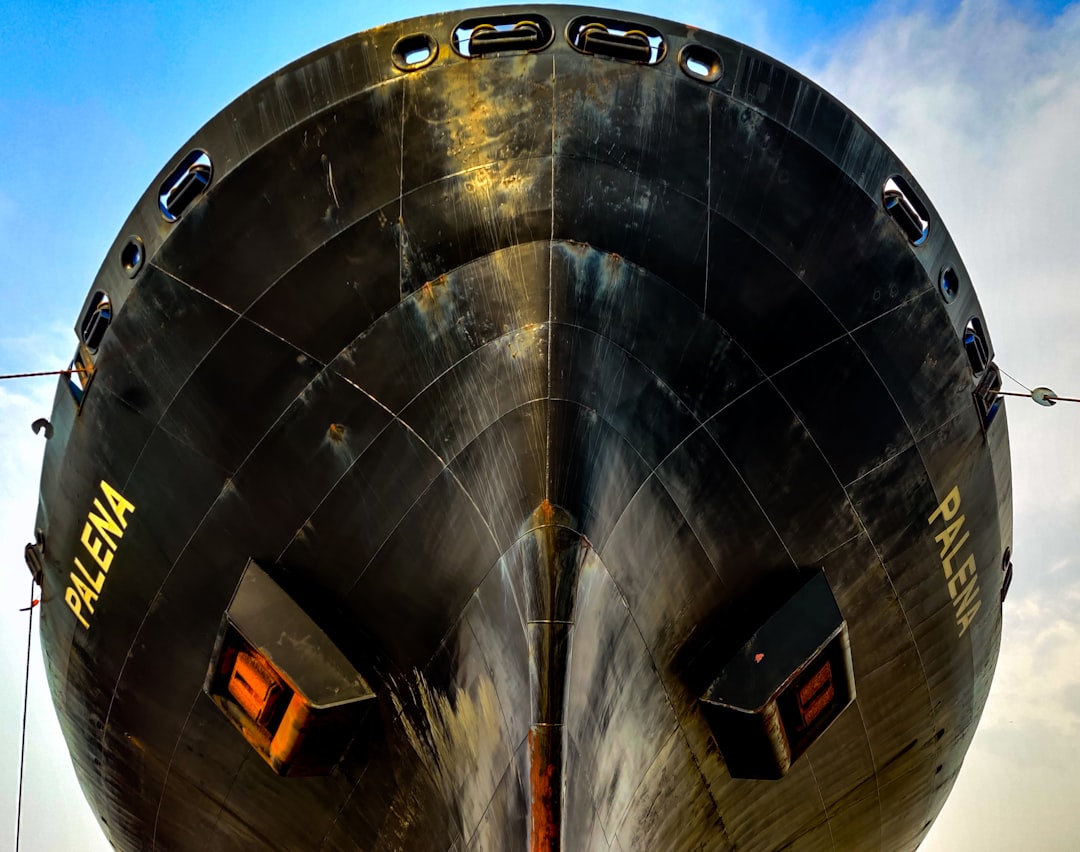The Drake Passage, a body of water that separates South America from Antarctica, is renowned for its tumultuous seas and breathtaking vistas. Named after the English explorer Sir Francis Drake, who navigated these waters in the late 16th century, the passage has become a significant route for adventurers and researchers alike. It serves as a gateway to the Antarctic, drawing travelers eager to experience the raw beauty of one of the planet’s last frontiers.
Crossing the Drake Passage is often described as a rite of passage for those seeking adventure. The journey is fraught with challenges, yet it offers unparalleled opportunities to witness some of the most pristine environments on Earth.
As travelers embark on this voyage, they are not just traversing a stretch of ocean; they are stepping into a world where nature reigns supreme, and the elements dictate the experience. The Drake Passage is a testament to the power of nature and the indomitable human spirit that seeks to explore its depths.
Key Takeaways
- The Drake Passage is a body of water between South America’s Cape Horn and the South Shetland Islands of Antarctica, known for its challenging sailing conditions.
- The Drake Passage is significant geographically as it represents the shortest crossing from Antarctica to any other landmass, making it a crucial route for ocean currents and marine life.
- When preparing for a journey across the Drake Passage, travelers should expect rough seas, strong winds, and potential seasickness, and should plan accordingly with appropriate gear and medications.
- Choosing the right vessel for crossing the Drake Passage is essential, with considerations for size, stability, and experienced crew to ensure a safe and comfortable journey.
- Safety measures and precautions for navigating the Drake Passage include following the guidance of experienced expedition leaders, wearing appropriate gear, and being aware of emergency procedures.
Understanding the geographical significance of the Drake Passage
The geographical significance of the Drake Passage extends beyond its role as a maritime route. It is a crucial connector between the Atlantic and Pacific Oceans, facilitating oceanic currents that influence global climate patterns. The passage is characterized by its narrow width, measuring approximately 800 kilometers at its widest point, and its depth, which reaches over 3,500 meters in some areas.
This unique topography contributes to the unpredictable weather conditions that travelers often encounter. Moreover, the Drake Passage plays a vital role in marine biodiversity. The cold waters are rich in nutrients, supporting a diverse array of marine life, including krill, which serves as a primary food source for many species of whales and seabirds.
The convergence of different oceanic currents creates an ecosystem that is both dynamic and fragile.
Preparing for the journey: what to expect and how to plan

Preparation for crossing the Drake Passage requires careful planning and consideration. Travelers should begin by researching the best times to embark on their journey, typically during the austral summer months from November to March when weather conditions are more favorable. It is essential to choose a reputable tour operator that specializes in Antarctic expeditions, as they will provide valuable insights into what to expect during the crossing.
Packing appropriately is another critical aspect of preparation. Travelers should invest in high-quality waterproof gear, thermal layers, and sturdy footwear to ensure comfort during the journey. Additionally, it is advisable to bring seasickness medication, as the unpredictable nature of the passage can lead to rough seas.
Understanding what to expect in terms of weather conditions and potential challenges will help travelers mentally prepare for their adventure.
Choosing the right vessel for crossing the Drake Passage
| Vessel Type | Advantages | Disadvantages |
|---|---|---|
| Icebreaker | Can navigate through heavy ice | Expensive to operate |
| Expedition Cruise Ship | Comfortable accommodations | May not be able to navigate through heavy ice |
| Sailboat | Environmentally friendly | Slower than motorized vessels |
Selecting the right vessel for crossing the Drake Passage is paramount to ensuring a safe and enjoyable experience. Various types of ships are available, ranging from large cruise liners to smaller expedition vessels. Larger ships may offer more amenities and stability in rough seas, while smaller vessels can provide a more intimate experience and greater access to remote areas.
Travelers should consider their personal preferences and comfort levels when choosing a vessel. Those seeking luxury may opt for larger cruise ships with extensive onboard facilities, while adventure seekers might prefer smaller ships that allow for closer encounters with wildlife and more flexible itineraries. Regardless of the choice, it is essential to ensure that the vessel is equipped with modern safety features and experienced crew members familiar with navigating the challenging waters of the Drake Passage.
Safety measures and precautions for navigating the Drake Passage
Safety measures are paramount when navigating the Drake Passage due to its unpredictable weather and strong currents. Tour operators typically conduct thorough safety briefings before departure, educating travelers on emergency procedures and safety equipment available onboard. Life jackets, lifeboats, and communication devices are standard safety features that should be readily accessible.
In addition to onboard safety protocols, travelers should remain vigilant during their crossing. It is advisable to stay informed about weather conditions and heed any warnings from crew members regarding rough seas or potential hazards. Maintaining a sense of awareness and preparedness can significantly enhance safety during this adventurous journey.
Wildlife encounters and natural wonders along the way

One of the most captivating aspects of crossing the Drake Passage is the opportunity for wildlife encounters and witnessing natural wonders. The waters are teeming with life, offering glimpses of majestic whales breaching the surface, playful seals basking on ice floes, and an array of seabirds soaring overhead. Travelers may spot species such as albatrosses, petrels, and penguins, each contributing to the rich tapestry of life in this remote region.
The natural beauty surrounding the passage is equally awe-inspiring. Icebergs of various shapes and sizes drift through the waters, creating a stunning visual spectacle against the backdrop of rugged coastlines. The interplay of light on ice and water can produce breathtaking scenes that captivate photographers and nature enthusiasts alike.
These encounters with wildlife and natural wonders serve as reminders of the fragility and magnificence of Earth’s ecosystems.
Coping with the challenges of crossing the Drake Passage
Crossing the Drake Passage is not without its challenges, particularly due to its notorious reputation for rough seas. Travelers may experience seasickness or discomfort during turbulent conditions, which can be daunting for those unaccustomed to maritime travel. However, there are strategies to cope with these challenges effectively.
Staying hydrated and nourished is crucial during rough crossings. Consuming light meals and avoiding heavy foods can help mitigate feelings of nausea. Additionally, finding a comfortable spot on deck or inside the ship where one can focus on stable points can alleviate discomfort.
Engaging in relaxation techniques or distractions such as reading or watching films can also help pass the time during challenging moments at sea.
Navigating the Drake Passage: a historical perspective
The historical significance of the Drake Passage cannot be overstated. It has long been a route for explorers seeking new lands and trade routes since its discovery by Sir Francis Drake in 1578. The passage has witnessed countless voyages that have shaped maritime history, including those undertaken by early whalers and explorers who sought to uncover Antarctica’s mysteries.
In modern times, the passage has become synonymous with adventure tourism and scientific research. Expeditions have contributed significantly to our understanding of climate change, marine biology, and glaciology in this unique environment. The legacy of exploration continues as new generations embark on journeys across these storied waters, each adding their chapter to the rich history of human interaction with this remote region.
The allure of adventure: why travelers are drawn to crossing the Drake Passage
The allure of adventure is a powerful motivator for travelers drawn to cross the Drake Passage. For many, it represents an opportunity to step outside their comfort zones and embrace the unknown. The thrill of navigating one of the world’s most challenging maritime routes ignites a sense of excitement that few other experiences can match.
Moreover, crossing the Drake Passage offers a chance for personal growth and transformation. Travelers often return from their journeys with newfound perspectives on nature, resilience, and their place in the world. The experience fosters a deep appreciation for Earth’s beauty and fragility, inspiring individuals to advocate for conservation efforts upon their return home.
Making the most of the journey: activities and experiences during the crossing
To make the most of their journey across the Drake Passage, travelers can engage in various activities that enhance their experience. Onboard lectures led by experts provide valuable insights into marine life, geology, and climate science, enriching travelers’ understanding of their surroundings. Photography workshops may also be offered, allowing participants to capture stunning images of wildlife and landscapes.
Additionally, many vessels provide opportunities for zodiac excursions once they reach calmer waters near Antarctica. These small boat trips allow travelers to get up close to icebergs, observe wildlife in their natural habitats, and explore remote shorelines that larger ships cannot access. Such activities create lasting memories and deepen connections with this extraordinary environment.
reflecting on the transformative experience of navigating the Drake Passage
Navigating the Drake Passage is more than just a physical journey; it is a transformative experience that leaves an indelible mark on those who undertake it. The challenges faced during crossing serve as catalysts for personal growth, while encounters with wildlife and breathtaking landscapes foster a profound appreciation for nature’s wonders. As travelers reflect on their experiences in this remarkable region, they often find themselves changed in ways they never anticipated.
The journey across the Drake Passage becomes a symbol of adventure, resilience, and connection to something greater than oneself—a reminder that exploration is not just about reaching new destinations but also about discovering new facets of one’s own spirit along the way.
The Drake Passage is a notorious stretch of water that challenges even the most seasoned sailors with its unpredictable weather and turbulent seas. For those interested in learning more about the experiences of ships navigating this treacherous route, a related article can be found on MyGeoQuest. This article delves into the history and significance of the Drake Passage, offering insights into the challenges faced by vessels that brave its waters. To explore this fascinating topic further, you can read the full article by visiting MyGeoQuest’s detailed exploration of the Drake Passage.
WATCH HERE: Drake Passage: Earth’s Deadliest Waters Revealed
FAQs
What is the Drake Passage?
The Drake Passage is the body of water between the southern tip of South America and the northern tip of the Antarctic Peninsula. It is known for its rough seas and challenging sailing conditions.
What is a Drake Passage ship?
A Drake Passage ship is a vessel specifically designed to navigate the challenging waters of the Drake Passage. These ships are often equipped with reinforced hulls and advanced stabilizing technology to provide a smoother sailing experience for passengers.
What are the typical features of a Drake Passage ship?
Drake Passage ships typically feature comfortable accommodations, dining facilities, observation decks, and expedition staff. They are designed to provide a safe and comfortable journey for passengers while allowing them to experience the unique wildlife and landscapes of the region.
What are the main attractions of a Drake Passage cruise?
The main attractions of a Drake Passage cruise include the opportunity to see diverse wildlife such as penguins, seals, and whales, as well as stunning landscapes of icebergs, glaciers, and remote islands. It also offers the chance to experience the remote and pristine environment of the Antarctic region.
What should I consider before booking a Drake Passage cruise?
Before booking a Drake Passage cruise, it is important to consider factors such as the time of year, the length of the cruise, the specific itinerary and activities offered, and the level of comfort and amenities provided on the ship. It is also important to consider any potential seasickness and prepare accordingly.
